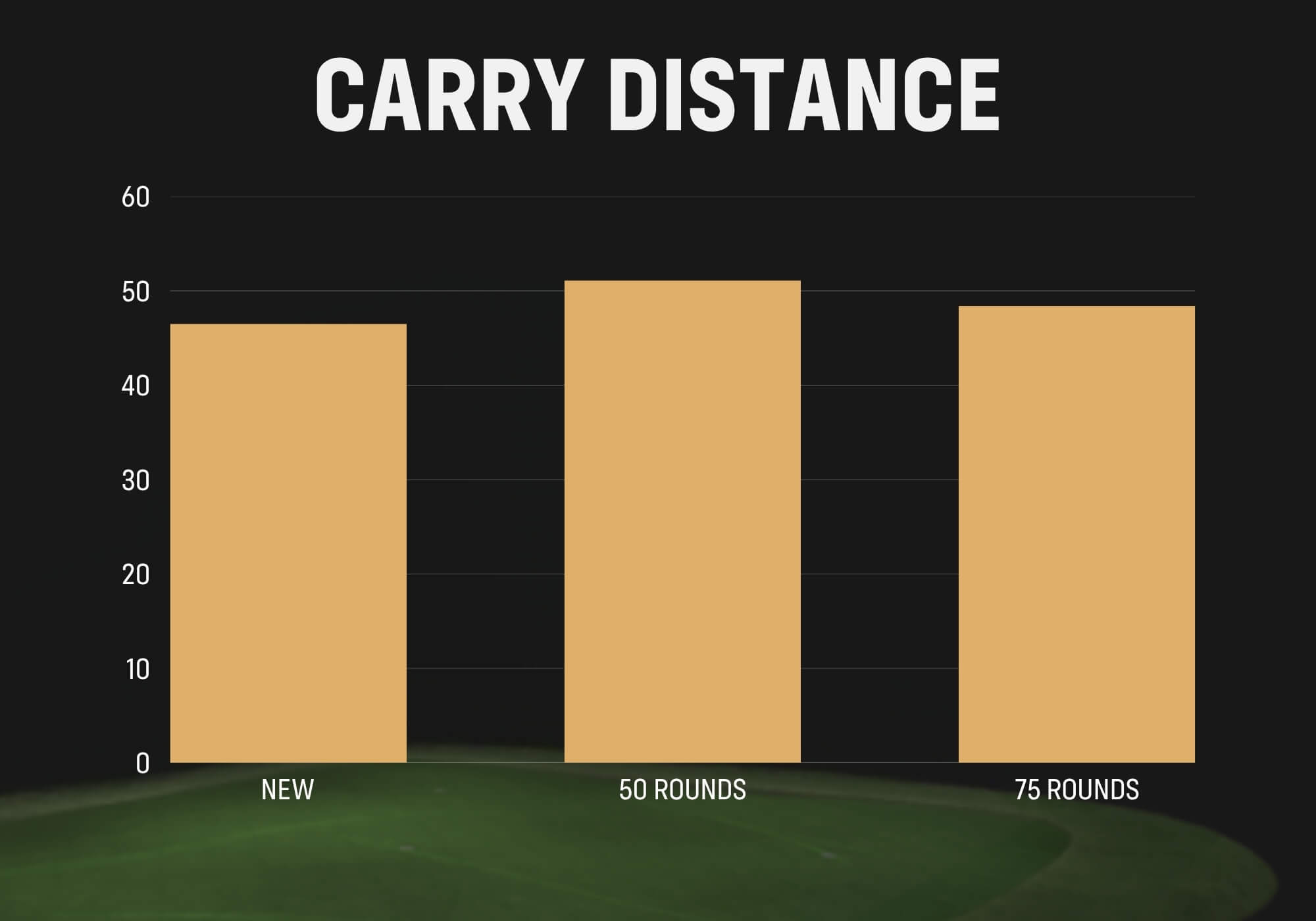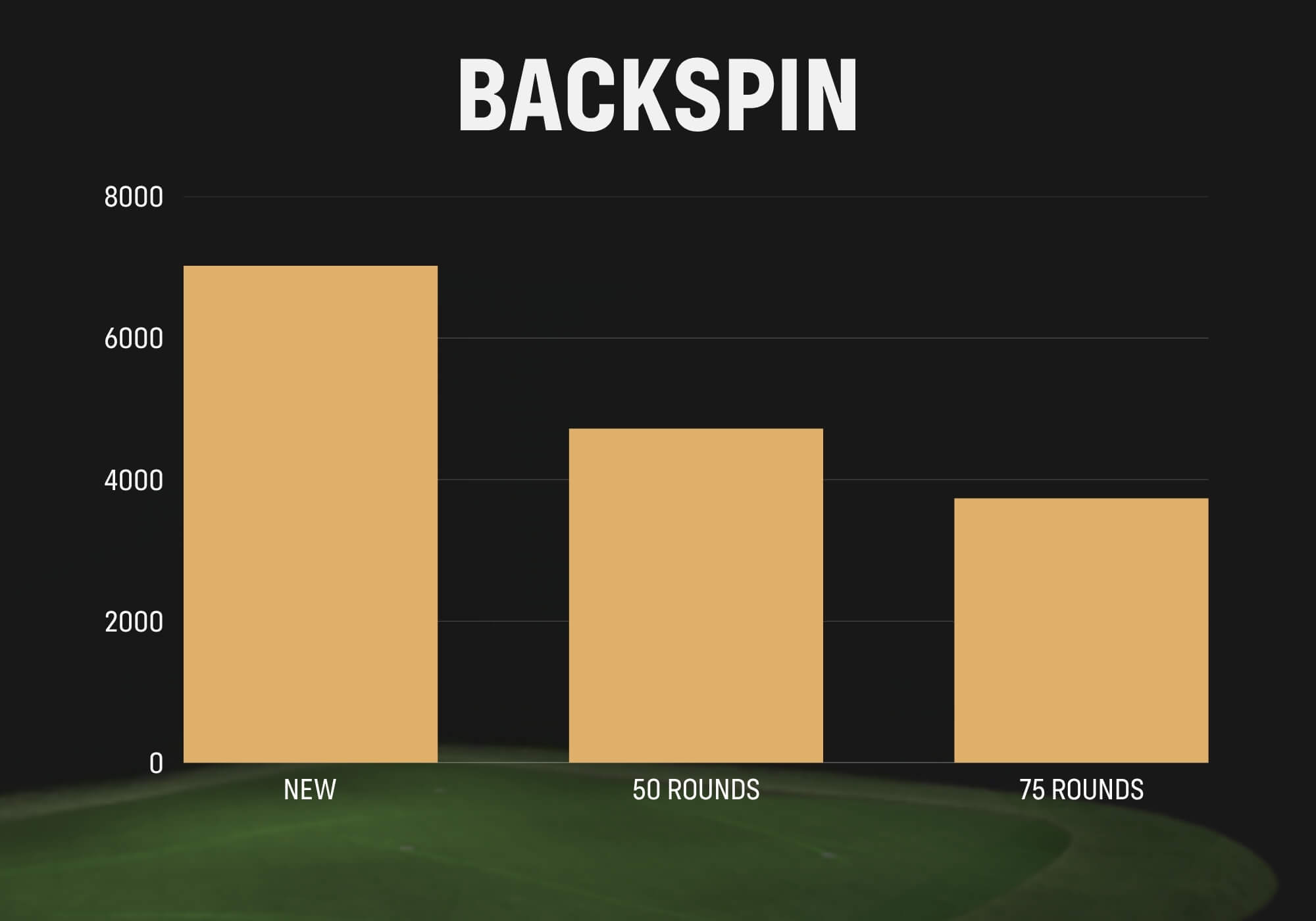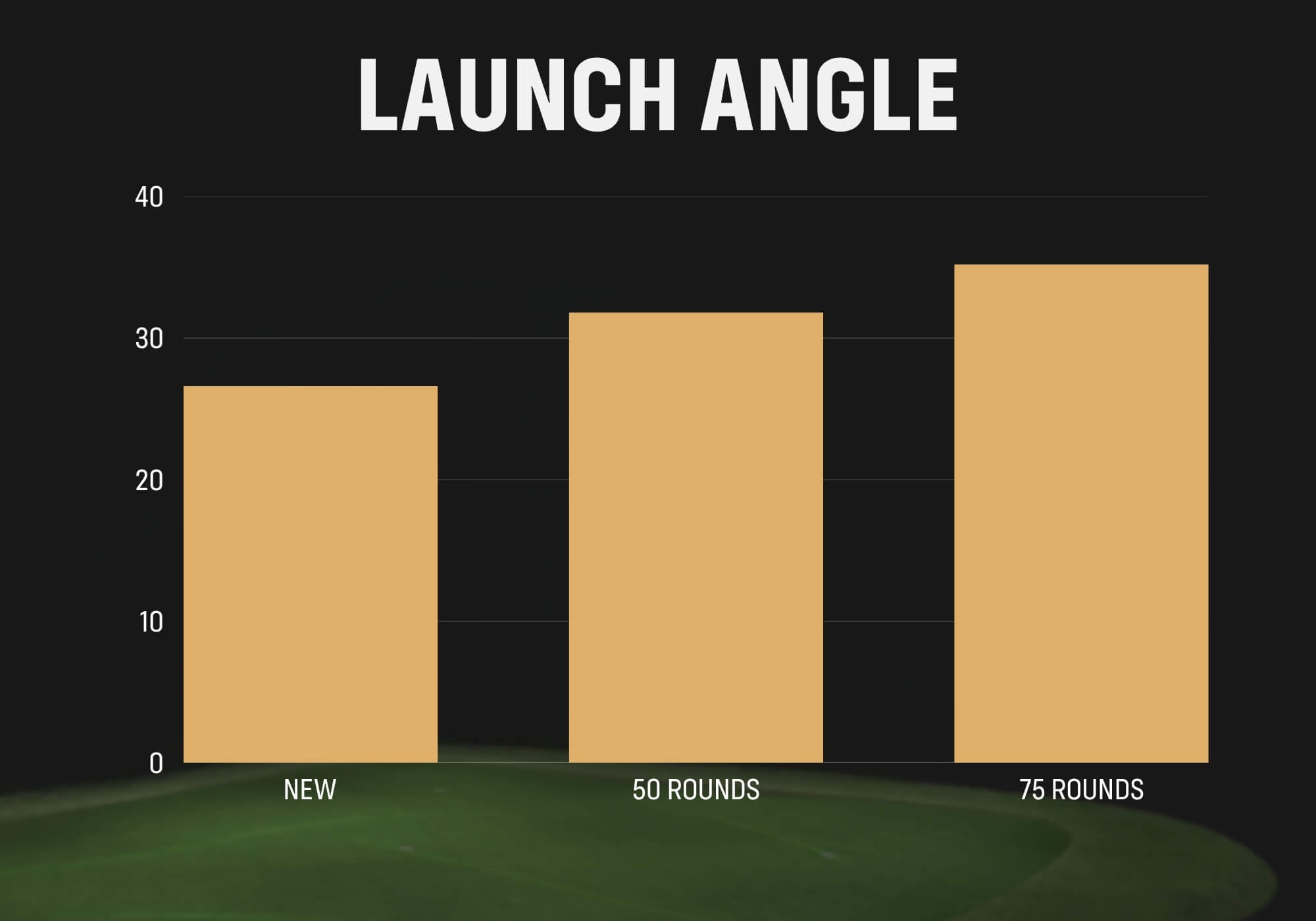Golfing News & Blog Articles
Stop Using Worn Wedges: We Show You The Exact Spin Loss After 75 Rounds
Performance with a wedge matters more than you may realize. Should you go through a wedge fitting? Absolutely. But there is another part of the story that doesn’t garner enough attention.
How often should I replace my wedges? More importantly: what performance changes will I see as my wedges get older?
This article is specific to Vokey wedges but it is applicable to any golf wedge.

What does Titleist suggest?
Titleist’s longstanding suggestion is to replace your wedges after 65-75 rounds of golf. Some golfers exceed this in a single calendar year.
The performance story
As grooves inevitably lose their bite, how does performance change? Nothing will be better than fresh grooves and that’s where this story begins.
In order to show performance changes, let’s start fresh with a brand-new golf wedge.

Simulating wear on a wedge’s grooves
How many shots are required to simulate 75 rounds of wear on a wedge’s grooves? Titleist suggests this equates to 500 shots out of a bunker.

I took a brand-new 56-degree Titleist Vokey SM10 and went to work. There are three phases to this process.
Baseline data collection from the brand-new Titleist Vokey SM10 A second data collection after 300 shots from a bunker. This simulates roughly 50 rounds. A final data collection after 500 shots from a bunker, the peak of 75 rounds of simulation.The change in performance is staggering. In order to see the true performance change, all of the data collection was done off grass and hitting to a 50-yard target. At 50 yards, you’ll see the changes in the important metrics of carry distance, backspin and launch angle.
Groove wear and the aftermath
A brand-new wedge is going to produce peak performance. A wedge with 75 rounds of wear will work, kinda, but consistency is going to be erratic. Take a look at the data.

Carry Distance
Having distance control is critical across your golf bag. Arguably, this is most important with your wedges.
At first glance, you can see the carry distance yardages are similar on average: 46, 51 and 48 yards respectively. What you don’t see is the standard deviations. Standard deviations are a good representation of consistency. While this is just the first example, the lower the standard deviation, the better.
The standard deviation for carry distance with 75 rounds of wear doubles from the brand-new wedge. It goes from just below three to six. The differential in carry distance with 75 rounds of use is nearly 20 yards from a short to long outcome.

Backspin
Spin is a critical ingredient in wedge performance. The regression of spin is significant as a wedge experiences wear. Brand-new, it spun at 7,021 rpm on average. Five hundred bunker shots later, 75 rounds of simulation later, and it spins at 3,737 rpm on average.
The standard deviation paints an even crazier picture. Standard deviation for backspin on a 50-yard shot increases nearly threefold. It goes from 574 rpm to 1,589. Spin results with 75 rounds of wear are wildly unpredictable.

Launch Angle
Why evaluate launch angle? At 50 yards, it is a key metric for fitting a wedge. You want the launch angle to be roughly half of the loft of the wedge in hand.
With a brand-new wedge, the average launch angle was 27 degrees, a great starting point. As wear increases, launch angle dramatically increases. The average launch angle goes from 27 degrees to 35 degrees. That is an eight-degree change in launch and we aren’t even changing the actual loft on the wedge.

Out with the old, in with the new
If your wedge has excessive wear, it will not produce reliable shot outcomes. Spin will decrease and launch will increase. This will lead to unpredictable carry distance control.

We just released our “Best Wedges of 2025” wherein we include testing in wet conditions. The performance characteristics of a wedge with considerable wear are eerily similar to wedges that do not perform well in wet conditions.
Two things happen: spin decreases and launch angle increases.
Wedges that do not handle wet conditions well suffer in overall performance. They are unreliable.
If your wedges have excessive wear, seriously consider replacing them. If you value performance, you’ll make the change. Out with the old, in with the new.
The post Stop Using Worn Wedges: We Show You The Exact Spin Loss After 75 Rounds appeared first on MyGolfSpy.


